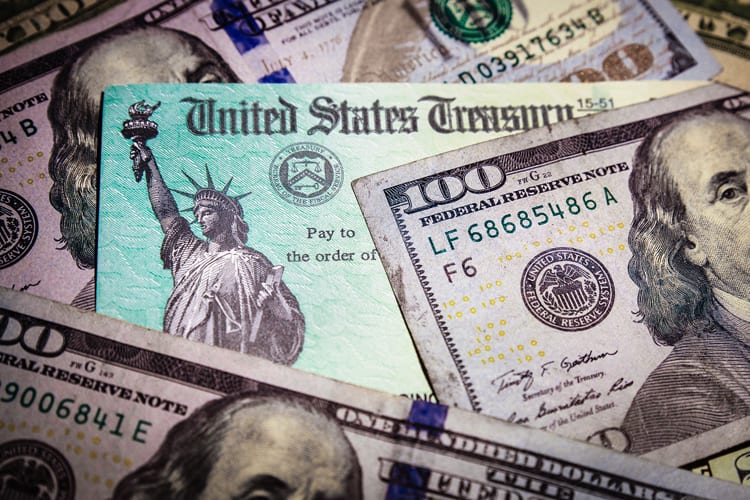Here’s How the Average American Spent Their Stimulus Check

When the federal government began sending $1,200 relief checks to Americans, plenty of questions swirled around. Many wondered how the money would be spent, and if we would see any economic recovery as a result. Others (ourselves included!) provided advice on where and how to spend stimulus money if you had any that wasn’t already earmarked for spending.
Thanks to the U.S. Bureau of Labor Statistics, we now have data on how Americans spent their stimulus. The results aren’t necessarily surprising, but they are worth studying. BLS’s data provides us some interesting insight into how Americans have spent and survived during the ongoing pandemic.
How Stimulus Checks Were Spent
It shouldn’t come as a surprise that most Americans who got a stimulus check used it primarily to pay bills. 59 percent of people said their stimulus went toward bills, compared to 13 percent that put the money toward savings and 12 percent that used it to pay off debt. This is pretty consistent with what we saw in April before checks were sent out when 78 percent of working-class Americans said they’d use their check on bills.
Food (66 percent), utilities (50 percent), personal care (48 percent), and rent (27 percent) were the biggest spending categories. On the flip side, just 3 percent of people spent their stimulus money on recreational goods.
A vast majority of people – 70 percent – said most of the money they spent came from their regular income, despite massive job disruption. The next most important source of money has been stimulus checks. Twenty-six percent of Americans said that they used stimulus payments in covering weekly expenses. On the other hand, 23 percent turned to credit cards or loans, 22 percent tapped into savings or sold assets, and 13 percent have used unemployment payments.
Older Americans were far more likely to put their stimulus money into savings than their younger counterparts. While 16 percent of Baby Boomers and 27 percent of Silent Generation members moved money into savings, only 13 percent of Millennials and 10 percent of Gen Z did the same.
Future Stimulus
The full data set is really interesting and breaks things down by income level, household size, job status, etc. The greatest takeaway from the entire study, though, is just how critical stimulus money is.
Out-of-work Americans relied on their stimulus check to help cover essential costs and survive. Families put the money toward expenses and debt almost exclusively to help their households. $1,200 is not a groundbreaking amount of money, but it’s enough to make a difference in the lives of millions of people.
While the status of another stimulus bill is uncertain, it’s clearly necessary. A stimulus check helps bring food security, financial stability, and relief to struggling families.









